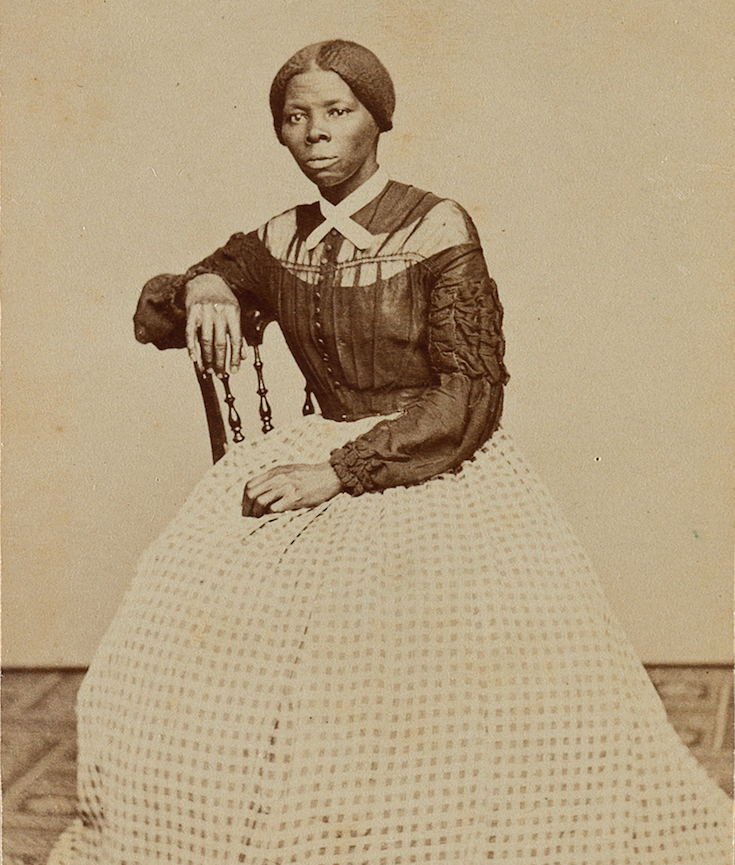A previously unrecorded photograph of Harriet Tubman has resurfaced from an album of cartes-de-visite, showing a considerably younger image of the abolitionist than those captured in other known portraits. Likely taken between 1865 and 1868 — right at the end of the Civil War, when she was in her mid-40s — it depicts her in full, seated calmly on a chair, wearing a checkered skirt and black blouse. She gazes directly at us, and her expression is resolute but still soft, offering little hint that she spent her previous years devoted to liberating countless slaves.
[mc4wp_form id=”6042″]
 Photo | Carte-de-visite of Harriet Tubman, found in an album from the 1860s (all photos courtesy Swann Auction Galleries)
Photo | Carte-de-visite of Harriet Tubman, found in an album from the 1860s (all photos courtesy Swann Auction Galleries)
 Photo | Silver print of Harriet Tubman
Photo | Silver print of Harriet Tubman
Harriet Tubman escaped slavery to become a leading abolitionist. She led hundreds of enslaved people to freedom along the route of the Underground Railroad.
Harriet Tubman escaped from slavery in the South to become a leading abolitionist before the American Civil War. She was born into slavery in Maryland in 1820, and successfully escaped in 1849. Yet she risked her life and freedom and returned many times to rescue both family members and other slaves from the plantation system. Tubman led hundreds to freedom in the North as the most famous “conductor” on the Underground Railroad, an elaborate secret network of safe houses organized for that purpose. She also helped the Union Army during the war, working as a spy among other roles. After the Civil War ended, Tubman dedicated her life to helping impoverished former slaves and the elderly, establishing her own Home for the Aged. In honor of her life and by popular demand via an online poll, in 2016, the U.S. Treasury Department announced that Harriet Tubman will replace Andrew Jackson on the center of a new $20 bill. (Biography.com).


You must be logged in to post a comment.